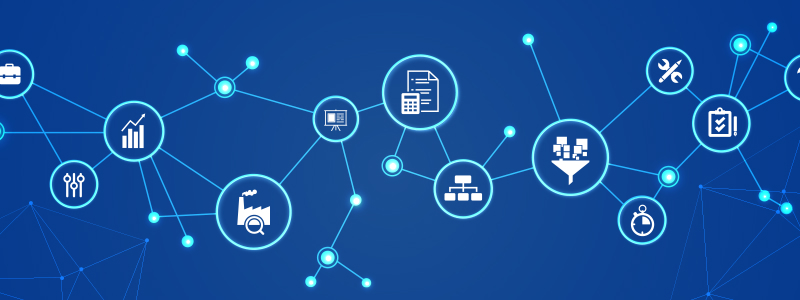
What Is Data Replication? Benefits, Types, Examples, and Use Cases
What is data replication?
Data replication is defined as the process of creating, distributing, and managing copies of data across multiple locations to ensure high availability, data redundancy, and disaster recovery in an organization.
In practice, data replication typically involves an automated procedure that copies data from a primary database source to one or more secondary locations. Organizations can replicate data continuously in near real time or at scheduled intervals, depending on their requirements for:
- Data freshness
- Recovery time objectives
- Recovery point objectives
- Available network bandwidth
- Volume and frequency of data changes
These requirements also guide the organization to decide whether data replication will be a one-time or ongoing process. The latter aims to ensure that the replicated data is regularly updated and consistent with the source.
How does data replication work?
Data replication continuously copies data from one location to another so that source and target systems stay in sync. For example, data can be replicated from one on-premises system to another on-premises system, from on-premises system to a cloud database, or even from cloud to cloud. Essentially, whenever data is added, updated, or deleted in the original system, a process monitors these changes and makes sure that they’re quickly copied over to a secondary system. This way, if something goes wrong with the original, the replicated data can take over.
There are two main methods for data replication:
- Synchronous data replication: In synchronous replication, every change is written to both the primary and secondary systems at the same time. This guarantees that both systems are exactly in sync, although it can slow things down a bit because every update must be confirmed by both the systems.
- Asynchronous data replication: On the other hand, asynchronous replication writes changes to the primary system first and then updates the backup shortly afterward. This approach is faster but means the backup might be a little behind the primary system at any given moment.
Data replication examples
Here are some data replication examples depicting how it’s used in different industries:
Healthcare
Replicating patient electronic health records (EHRs) across different hospitals within a network ensures that doctors and nurses have access to critical patient information regardless of which facility the patient visits.
Finance
Replicating transaction data across geographically distributed branches ensures consistency in account balances and transaction history, regardless of where a customer interacts with the bank. This is vital for maintaining trust and regulatory compliance.
E-commerce
Replicating order processing data ensures that if one processing center experiences an issue, orders can still be fulfilled from another replicated location, minimizing disruptions to the customer experience.
Data replication across different environments
Data replication isn’t limited to databases and is widely used in different systems and environments.
Data replication in file storage systems
In file storage systems, organizations use data replication to ensure data durability and availability. Techniques like mirroring create an exact copy of the data on a separate storage device, providing immediate failover in case of primary storage failure. More advanced systems employ techniques like Redundant Array of Independent Disks (RAID) to distribute data across multiple disks, offering varying levels of redundancy and performance.
File storage systems often include built-in tools to manage data replication, ensuring that changes made to the main (primary) file system are also applied to the copies (replicas). Because file operations are typically less complex than database transactions, resolving conflicting changes is much simpler compared to database systems. However, while file replication safeguards raw data, it doesn’t inherently support structured transformations, system-wide data integration, or real-time insights—a critical gap for businesses needing synchronized, analytics-ready data.
Cloud data replication
Cloud platforms take replication a step further by enabling scalable, geo-distributed data availability. Cloud providers offer replication strategies ranging from intra-region (availability zone-level) replication to multi-region replication for disaster recovery and business continuity. These mechanisms ensure high availability and fault tolerance, but managing cloud-replicated data across hybrid and multi-cloud environments introduces complexity in synchronization and governance.
Organizations using cloud-based data warehouses or ETL workflows must go beyond simple replication—they need to ingest, transform, and unify replicated data into a structured, query-ready format. This is where an intelligent data integration platform bridges the gap, allowing businesses to consolidate replicated data across disparate cloud environments into a single source of truth for reporting and decision-making.
Data replication in distributed systems
Modern distributed computing architectures rely on replication not just for fault tolerance, but also to ensure seamless application performance. By keeping copies of data closer to processing units or end users, replication enables faster query execution and system responsiveness.
However, managing data consistency across distributed environments introduces major challenges. Organizations typically balance between:
- Strong consistency, where all replicas reflect the same state instantly (ensuring accuracy but adding latency).
- Eventual consistency, where replicas sync over time (favoring performance but introducing temporary discrepancies).
To synchronize replicated data across distributed databases, warehouses, and APIs, businesses employ ETL automation tools with streaming data pipelines and change data capture (CDC) capabilities. These solutions ensure that replicated data is highly available clean, transformed, and usable for analytics, machine learning, and operational workflows.
Related: What is database replication?
Benefits of data replication
Data replication is a crucial strategy for modern businesses seeking to enhance data availability, resilience, and performance. By creating and maintaining copies of data across multiple locations, organizations can unlock a range of significant advantages:
Data accessibility and availability
Data replication ensures easy access to data. This is particularly useful for multi-national organizations spread over different locations. Therefore, in case of a hardware failure or any other issue in one location, data is still available to other sites.
Disaster recovery
The main benefit appears in terms of improved disaster recovery and data protection. Data replication ensures that a consistent backup is maintained in the event of a disaster, hardware catastrophe, or a system breach, which can compromise data.
So, if a system stops working because of any of the reasons mentioned above, enterprises can still access the data from a different location.
Server performance
Data replication can also enhance and boost server performance. When companies run numerous data copies on multiple servers, users can access data much quicker. Moreover, when read operations are directed to a replica, admins can reduce processing cycles on the primary server for more resource-exhaustive write operations.
Better network performance
Keeping copies of the same data in various locations can reduce data access latency by retrieving the required data from the location where the transaction is being executed.
For example, users in Asian or European countries may face latency issues when accessing Australian data centers. However, placing a replica of this data somewhere close to the user can enhance access times while balancing the load on the network.
Data analytics support
Usually, data-driven businesses duplicate data from numerous sources into their data stores, such as data warehouses or data lakes. This makes it easier for the analytics team dispersed across various locations to undertake shared projects.
Enhanced test system performance
Duplication simplifies the distribution and synchronization of data for test systems that mandate quick accessibility for faster decision-making.
Data replication types
Data replication strategies can be categorized in several ways, depending on the specific requirements for data latency and the complexity of the environment. Here’s an overview of some common data replication types and techniques:
1. Based on timing:
- Synchronous replication: In this method, data changes are written to all replicas simultaneously before the transaction is considered complete on the primary system. This ensures strong data consistency across all replicas. However, it can introduce higher latency as the primary system must wait for confirmation from all replicas.
- Asynchronous replication: With asynchronous replication, data changes are first written to the primary system, and then the changes are propagated to the replicas at a later point. This approach offers lower latency as the primary system doesn’t need to wait for all replicas. However, there’s a potential for data inconsistency if the primary system fails before the changes are fully replicated.
2. Based on Direction:
- Unidirectional replication (one-way replication): Data flows in only one direction, typically from a primary source to one or more read-only replicas. This is often used for reporting or read-heavy workloads where modifications are primarily done on the source.
- Bidirectional replication (two-way replication): Data can flow in both directions between two databases. This allows changes made on either database to be reflected on the other. It’s useful for scenarios where multiple systems need to independently update data, but it introduces complexities in handling potential conflicts.
- Multi-directional replication (peer-to-peer replication): Data can be replicated between multiple databases, where each database can act as both a publisher and a subscriber. This offers high availability and can distribute write workloads, but it significantly increases the complexity of conflict resolution and data consistency management.
3. Based on the data scope:
- Full replication: The entire database or dataset is copied to the replicas. This provides a complete copy of the data but can be resource-intensive in terms of storage and network bandwidth, especially for large databases. Full table replication is a specific full replication technique where an entire table (or a set of tables) is copied from the source to the target database. This can happen periodically or as an initial synchronization step.
- Partial replication: Only a subset of the data is replicated. This can be based on specific tables, rows (using filters), or columns. Partial replication helps to conserve resources and can be tailored to specific needs, such as replicating only certain transactional data to an analytical system. Common types of partial replication include:
-
- Transactional replication: Replicates individual transactions as they occur on the primary database to the replicas. This ensures high transactional consistency. A very common technique is log-based replication that works by reading the transaction logs (or binary logs in some systems) of the source database and then applying these log entries on the target database.
- Snapshot replication: Takes a point-in-time copy (snapshot) of the data and applies it to the replicas. This is often used for initial synchronization or for replicating data that doesn’t change frequently.
- Merge replication: Allows changes to be made independently on multiple replicas and then merges those changes back into the primary database and other replicas. This is useful for disconnected or occasionally connected environments but requires sophisticated conflict resolution mechanisms.
- Key-based incremental replication: Transfers only the changes made to the data since the last replication. Key-based incremental replication relies on identifying modified rows based on a specific key or set of keys, often in conjunction with a timestamp or version number column. When a change occurs, the system identifies the affected rows using these keys and replicates only those rows to the target.
Data replication limitations and considerations
Despite its numerous benefits, deploying data replication is not without potential pitfalls. Organizations must carefully consider several inherent risks, challenges encountered during implementation, and fundamental disadvantages.
Risks associated with data replication
- One significant risk involves data inconsistency. If not managed properly, particularly in asynchronous replication scenarios, delays or failures in updating replicas can lead to divergent datasets across different locations, causing confusion and potentially incorrect business decisions.
- Another considerable risk is increased security vulnerabilities. The more copies of data exist, and the more systems are involved in replication, the larger the attack surface becomes. Ensuring consistent security protocols across all replicas is crucial but can be complex.
- Furthermore, the risk of data corruption is amplified if the corruption propagates to replicas before detection and mitigation are initiated.
Data replication challenges
- A primary challenge lies in complexity. Configuring and managing replication across diverse systems and network infrastructures is technically demanding and requires specialized expertise.
- Ensuring data integrity throughout the replication process, particularly when dealing with high volumes of data and frequent updates, also poses a significant challenge.
- Furthermore, network bandwidth consumption can become a major challenge, especially for large datasets and frequent replication, potentially impacting other network-dependent applications.
- Another challenge involves latency, particularly in geographically distributed replication scenarios, where the time lag between updates to the primary and secondary systems can be substantial.
Data replication disadvantages
Certain inherent disadvantages are associated with data replication.
- One key disadvantage is the increased storage requirements. Maintaining multiple copies of data naturally necessitates significantly more storage capacity.
- The overhead on the primary system is often substantial, as it needs to dedicate resources to track and transmit changes to the replicas, impacting the performance of the primary system.
- The cost associated with implementing and maintaining a robust data replication infrastructure, including hardware, software, and skilled personnel, can be significant, especially for organizations with large-scale or complex data environments.
Data replication use cases
Geographic data distribution
For companies with geographically dispersed operations or users, replication enables bringing data closer to local users. This reduces network latency and improves user experience, especially for latency-sensitive applications.
System migration and upgrades
Replication can facilitate data migration to new systems or during database upgrades. Data can be replicated to the new system in parallel with the old one, allowing for a smoother cutover and reducing downtime.
Data integration
In environments where data is spread across multiple systems, data replication techniques can be used to consolidate information into a centralized location for analysis or other purposes.
Data warehousing and BI
Organizations use data replication to populate their data warehouses or BI systems. Operational data is replicated from the production database to a separate data warehouse, where it can be transformed and analyzed without impacting the performance of the transactional system.
How data replication tools help organizations
Data replication tools simplify and automate the process of maintaining consistent copies of data across different systems. They offer a variety of features that assist organizations in several ways:
- Modern data integration tools come equipped with built-in CDC and data replication capabilities coupled with a drag-and-drop UI that enables users to seamlessly set up replication processes.
- Replication tools allow for the automation of replication tasks, such as initial synchronization, continuous replication of changes, and management of replication schedules.
- Data replication tools are often designed to work with a wide range of database management systems (DBMS), whether relational (SQL Server, Oracle, PostgreSQL, MySQL) or NoSQL. This provides flexibility for organizations with heterogeneous environments.
- Modern data replication tools are designed to be scalable and capable of handling large data volumes and increasing replication loads as the organization’s needs evolve.
- Using no-code, enterprise-grade platforms to handle data replication minimizes the need for manual interventions.
Conclusion
Data replication offers several benefits to organizations, if implemented while considering the inherent risks and challenges involved. This process can be simplified using enterprise data management tools, such as Astera.
Astera offers data replication alongside data extraction, integration, cleansing, transformation, and warehousing capabilities—all in a 100% code-free interface. It automates the entire replication process using features like job scheduling, workflow automation, AI mapping, and built-in transformations and functions.
 Astera AI Agent Builder - First Look Coming Soon!
Astera AI Agent Builder - First Look Coming Soon!



